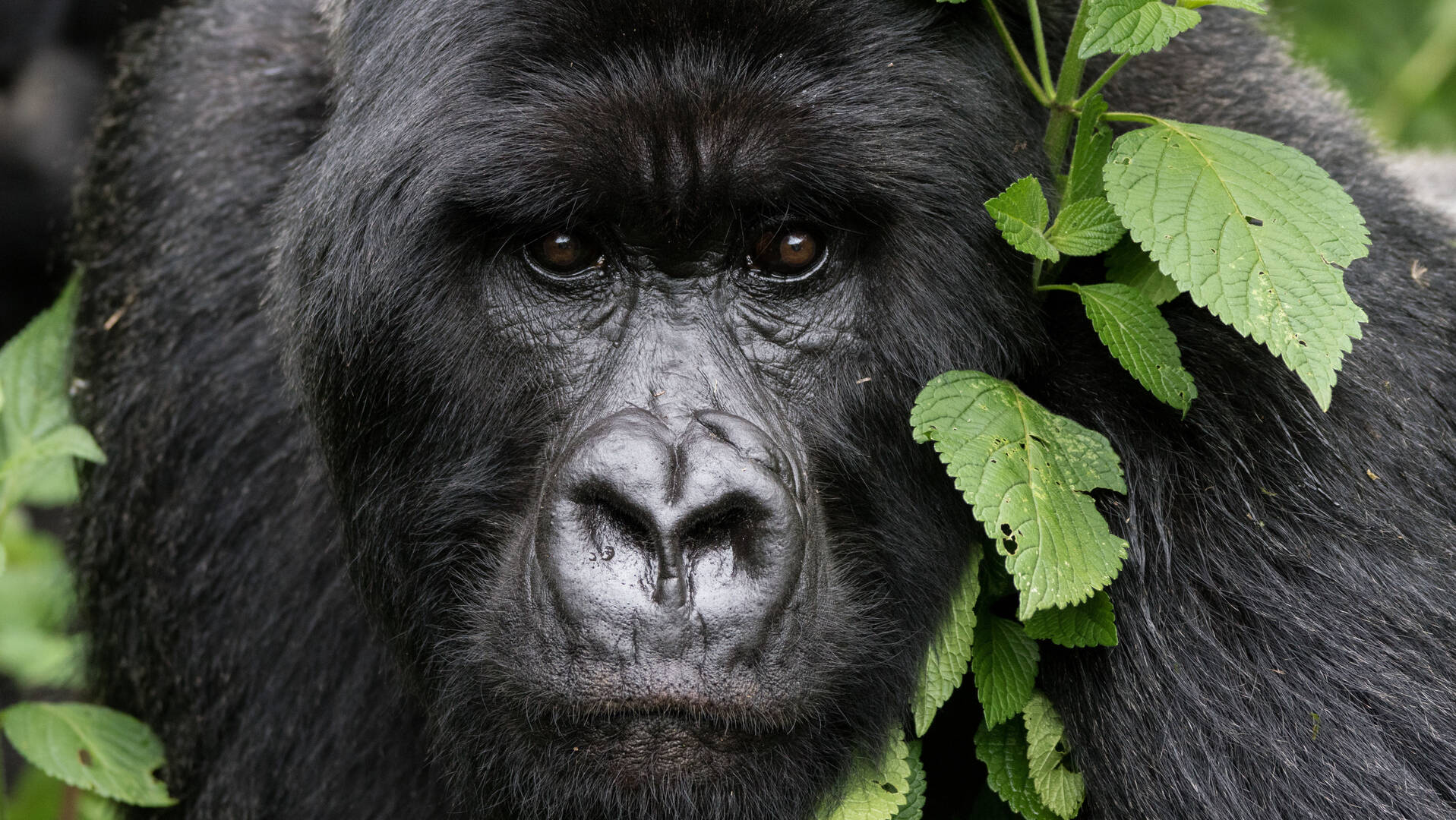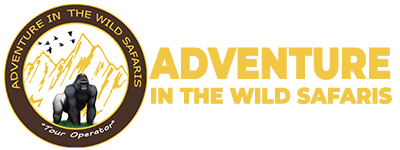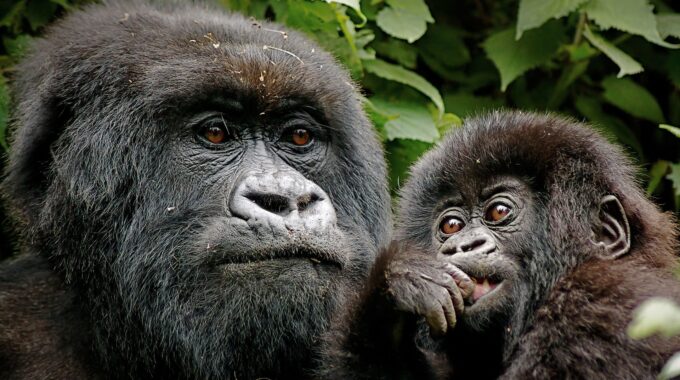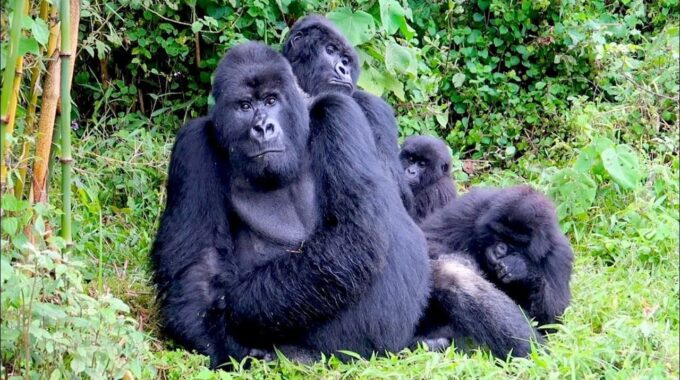How to Combine Gorilla Trekking in Rwanda with Safari in Tanzania Gorilla trekking in Rwanda:…
Combining Gorilla Trekking with Other Rwandan Attractions
Combining Gorilla Trekking with Other Rwandan Attractions

Combining gorilla trekking with other Rwandan attractions: Gorilla trekking in Rwanda is often the highlight of any African safari, but the country’s charm doesn’t end in the misty forests of Volcanoes National Park. Rwanda is a compact yet incredibly diverse destination that offers a rich blend of wildlife encounters, cultural experiences, historical sites, and breathtaking landscapes.
If you’re planning a trip, combining gorilla trekking with other Rwandan attractions will make your adventure more fulfilling, immersive, and memorable.
Why Expand Beyond Gorilla Trekking?
While encountering a mountain gorilla face-to-face is one of the most thrilling experiences in the world, Rwanda’s other attractions provide more profound context and a richer travel narrative. Combining activities allows you to
- Maximize your travel investment and time in East Africa.
- Balance adrenaline-filled trekking with relaxing or cultural days.
- Experience Rwanda’s transformation from post-genocide recovery to a model of sustainability and conservation.
- Explore diverse ecosystems — from montane forests and lakeshores to savannah plains.
Top Destinations to Combine with Gorilla Trekking in Rwanda
1. Kigali – Rwanda’s Capital of Culture and Cleanliness
Before or after your gorilla trek, spend at least a day in Kigali, Rwanda’s modern, clean, and welcoming capital.
Top experiences in Kigali:
- Kigali Genocide Memorial – A moving tribute to the victims of the 1994 genocide, this memorial provides vital context and insight into Rwanda’s history and recovery.
- Inema Arts Center – Showcasing contemporary African art and local creativity through rotating exhibitions, workshops, and artist residencies.
- Kimironko Market – The perfect place for local crafts, textiles, and food. A guided tour here provides rich interactions with Kigali’s bustling local culture.
- Coffee culture – Sample some of Africa’s best coffee at Question Coffee Café or Bourbon Coffee.
Kigali is the international gateway for most travelers, and it’s only a 2.5-hour drive from Volcanoes National Park, making it a perfect stopover or base.
2. Nyungwe Forest National Park – Primates and Canopy Walks
If you’re fascinated by primates, Nyungwe Forest National Park is a must. Located in southwestern Rwanda, it’s one of Africa’s oldest rainforests and home to:
- Chimpanzee tracking – Experience the thrill of observing these intelligent primates in their natural habitat.
- 13 primate species – Including L’Hoest’s monkeys, grey-cheeked mangabeys, and owl-faced monkeys.
- The Canopy Walkway – A 90-meter-long suspension bridge offering panoramic views of the forest canopy and birds below.
- Bird watching – Over 300 bird species, many endemic to the Albertine Rift. Enthusiasts may spot the Rwenzori turaco or red-collared mountain babbler.
- Waterfall hikes – Hike to the Isumo Waterfall or tackle one of the 15+ scenic trails through dense jungle terrain.
Accommodations in the park range from luxury eco-lodges like One&Only Nyungwe House to midrange guesthouses such as Gisakura Guest House. Travel from Volcanoes to Nyungwe is about 6–7 hours by car, best done over two days with scenic stops along Lake Kivu.
3. Lake Kivu – Relaxation Along Rwanda’s Western Border
After the intensity of trekking and forest hikes, unwind on the serene shores of Lake Kivu, one of Africa’s Great Lakes, straddling the Rwanda–DRC border.
What to do at Lake Kivu:
- Boat rides to Napoleon Island or Bat Island for bird watching and scenic vistas.
- Coffee tours – Visit local cooperatives like Kinunu or Cyimbili to see Rwanda’s specialty coffee production up close.
- Beach time – Gisenyi (Rubavu) and Kibuye (Karongi) offer lake beaches, luxury lodges, and sunset views over the water.
- Kayaking and paddleboarding – Enjoy the calm waters while surrounded by green hills and volcanic backdrops.
- Cultural tours – Meet local fishermen or attend community storytelling evenings along the lakeshore.
Lake Kivu is a natural stopover between Volcanoes and Nyungwe, ideal for a slower travel pace with wellness and scenic immersion.
4. Akagera National Park – Classic Big Five Safari
For traditional safari lovers, Rwanda’s Akagera National Park offers a drastically different ecosystem from the Virunga forests. This savannah park covers over 1,000 km² of woodland, open plains, and wetlands along the Tanzanian border.
Wildlife highlights in Akagera:
- Big Five game drives – Spot elephants, lions, rhinos, leopards, and buffalo alongside giraffes, zebras, and antelopes.
- Boat safaris on Lake Ihema – View hippos, crocodiles, and African fish eagles.
- Night drives – Look for nocturnal animals like civets, bush babies, and hyenas.
- Bird watching – Over 500 species including papyrus gonoleks and shoebills.
Where to stay: Options range from luxury at Magashi Camp to mid-range lodges like Akagera Game Lodge. Akagera is just 2.5–3 hours from Kigali, making it a practical pre- or post-trek safari destination.
Extended Itinerary Suggestions
10-Day Itinerary: Wildlife, Lakes, Forests & Culture
- Day 1: Arrival in Kigali, overnight
- Day 2: Kigali city tour + transfer to Akagera
- Day 3: Full-day safari in Akagera
- Day 4: Return to Kigali, visit Inema Arts Center
- Day 5: Drive to Volcanoes NP, cultural visit en route
- Day 6: Gorilla trekking
- Day 7: Golden monkey trek or hike to Dian Fossey’s tomb
- Day 8: Transfer to Lake Kivu (Gisenyi), boat cruise
- Day 9: Travel to Nyungwe, canopy walk
- Day 10: Chimp tracking + return to Kigali
Cultural and Historical Attractions to Include
Iby’Iwacu Cultural Village
Located near Volcanoes National Park, this immersive experience features traditional Rwandan architecture, dance performances, and storytelling. Meet former poachers who now protect gorillas through tourism.
Nyanza Royal Palace Museum
Step into Rwanda’s pre-colonial royal history with guided tours of the traditional palace and modern museum. Learn about monarchy, traditions, and the kingdom’s role in Rwanda’s heritage.
Sustainable and Responsible Travel in Rwanda
Rwanda has earned a global reputation for eco-tourism and conservation. When combining your activities:
- Choose lodges with eco-certification – Many use solar power, rainwater harvesting, and employ local staff.
- Follow park rules – Maintain a 10-meter distance from primates and avoid flash photography.
- Support community tourism – Book cultural visits, art tours, and workshops that empower local Rwandans.
- Use refillable water bottles – Rwanda is a plastic-free country; bring sustainable alternatives.
Travel Tips for Planning a Multi-Destination Trip
- Book internal travel through a reliable tour operator – Like Gorilla Rwanda Safaris.
- Fly into Kigali International Airport (KGL), ideally arriving a day before your trek to acclimate.
- Pack for diverse climates – Volcanoes and Nyungwe can be cold and wet; Akagera and Lake Kivu are warmer and sunnier.
- Carry cash in Rwandan Francs – ATMs are common in Kigali but rare in rural parks.
- Consider a driver-guide – Roads are good but navigating rural areas is easier with a local expert.
Why Rwanda is Perfect for Multi-Experience Travel
Rwanda’s compact size, top-notch road network, and strong conservation policies make it an ideal destination for travelers seeking diversity without the hassle of long transfers or internal flights. In a single trip, you can experience gorilla trekking, safari game drives, primates in ancient forests, lake retreats, and urban culture.
Whether you’re a wildlife enthusiast, a photographer, a history lover, or a first-time visitor to Africa, combining gorilla trekking with other Rwandan attractions offers unmatched variety and depth.
Related Blog Posts
- Packing Guide for Your Rwanda Safari Adventure
- Best Time to Visit Rwanda for Gorilla Trekking
- How to Book Gorilla Trekking Permits in Rwanda
- Gorilla Trekking vs. Chimpanzee Tracking in Rwanda
- Visa Requirements for Traveling to Rwanda



